Organic Gardening Basics: A Guide for Gardeners
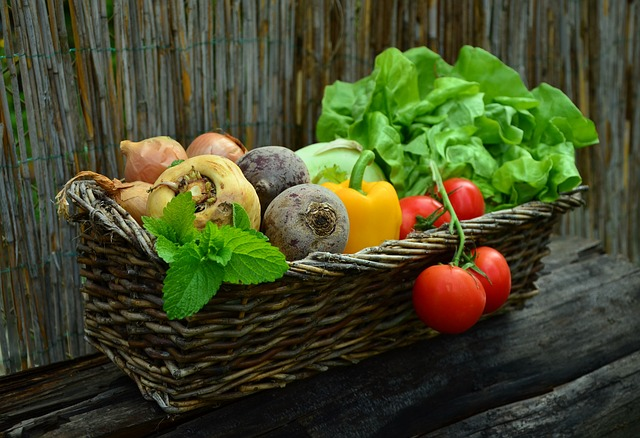
Organic gardening basics benefit the environment and foster a healthier, more vibrant ecosystem. We can grow delicious, nutrient-rich fruits, vegetables, and herbs without using dangerous chemicals or synthetic fertilizers by harnessing the force of nature. Instead, we’ll learn how to collaborate with nature to achieve a healthy balance of soil, plants, and beneficial organisms.
This blog will examine the fundamental principles and strategies supporting effective organic gardening. We’ll unravel the mysteries of cultivating thriving, resilient plants, from recognizing the importance of soil health to embracing biodiversity. You’ll learn how to design a sustainable garden, grow various crops, and maintain a healthy environment that supports beneficial insects, birds, and other species.
This site will offer you the knowledge on starting an organic garden and transform any space into a flourishing mecca, whether you have a large backyard, a garden site, a small urban balcony, or even a windowsill. So grab your gardening gloves, get ready to get your hands dirty, and come along with us as we discover the ultimate organic gardening essentials. We’ll plant a greener future together, one seed at a time.
Understanding Organic Gardening Basics
Organic gardening is cultivating plants and vegetables that prioritize the environment’s, plants’, animals’, and humans’ health and well-being. It is a holistic strategy that works with nature rather than against it, avoiding synthetic chemicals, genetically modified organisms (GMOs), and other artificial interventions.
It promotes the well-being of the soil, plants, wildlife, and humans while minimizing environmental impacts. By understanding and applying the principles, gardeners can create vibrant, thriving, visually appealing, environmentally friendly, and nourishing gardens.
How to Become an Organic Gardener
Start by educating yourself about principles and techniques. Understand the importance of soil health, biodiversity, and avoiding synthetic chemicals. Assess your gardening space and improve soil quality through composting and organic amendments. Choose organic seedlings and plants, using organic fertilizer, and practice organic pest and disease management. Embrace sustainable watering techniques and incorporate companion planting to enhance biodiversity. Continuously learning, adapting, and connecting with other gardeners. Enjoy the journey of cultivating a thriving organic garden while contributing to a healthier environment.
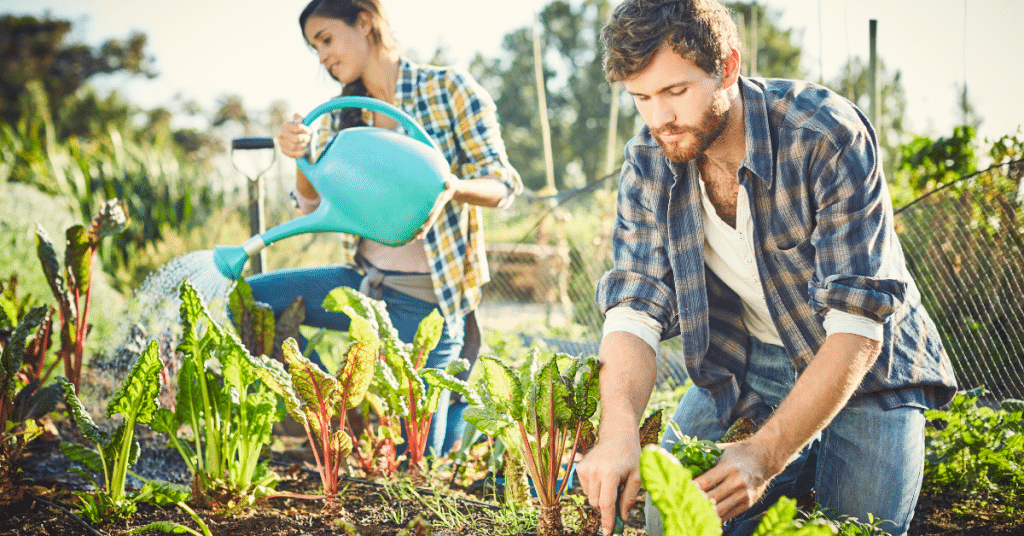
What are the Rules and Principles of Organic Gardening
Rules and principles of organic vegetable gardening form the guidelines and philosophies that organic gardeners follow. Here are some essential rules and regulations:
Avoid synthetic chemicals:
Gardeners should avoid using commercial pesticides, herbicides, and fertilizers. Instead, they rely on natural and organic pesticides and fertilizers that are safe for the environment, beneficial organisms, and human health.
Build and maintain healthy soil:
Soil health is crucial in organic gardening. Organic gardeners focus on improving soil fertility, structure, and nutrient content through organic soil amendments like compost, rock dust, cover crops, and organic matter. They prioritize soil health as the foundation for healthy plant growth.
Promote biodiversity:
Organic gardens embrace diversity by growing various native and companion plants. This promotes a balanced ecosystem, attracting beneficial insects, birds, and wildlife that contribute to natural pest control and pollination of garden plants.
Practice crop rotation:
To prevent the development of pests and illnesses in the soil, crop rotation involves planting various crops in a prescribed order. An organic gardener rotates crops to maintain soil health, manage problems, and optimize nutrient utilization.
Use organic pest and disease management:
Organic gardeners employ preventive measures and natural methods to manage pests and diseases in vegetable gardens. This includes physical barriers, cultural practices, beneficial insects, companion planting, and organic pest control solutions like neem oil or insecticidal soaps.
Conserve water:
Water conservation is essential in organic gardens. Use efficient watering techniques like drip irrigation or mulching to minimize water waste and ensure plants receive adequate moisture. Capturing rainwater for irrigation is also encouraged.
Create a compost pile and recycle:
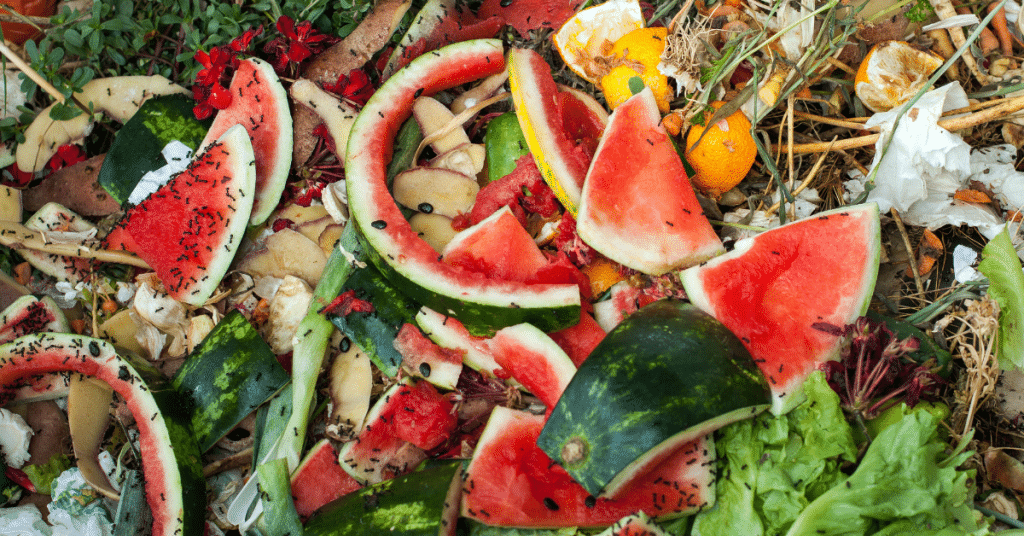
Compost kitchen scraps, yard waste, and other organic materials to create nutrient-rich compost. This reduces waste, enriches the soil, and minimizes the need for synthetic fertilizers.
Practice organic seeds selection:
Prioritize using organic or non-GMO seeds to maintain the integrity of your organic practices and avoid genetically modified organisms.
Embrace sustainable practices
Promote energy conservation, minimizing waste, and using renewable resources. This includes using natural and biodegradable materials, practicing responsible gardening techniques, and reducing your carbon footprint.
Continuous learning and improvement:
Organic gardening is a journey of learning and improvement. Organic gardeners stay informed about the latest organic gardening techniques, research, and innovations to refine their practices and make more sustainable choices continually.
What are the Organic Gardening Basics
If you want to maximize your growing success, it’s best to arm yourself with some knowledge before you go out and buy seeds or begin planning your garden. Here are some fundamentals you need to know before beginning your gardening adventure.
Know Your Local Climates
How climate change affects your region aids plant selection, water management, and resilience planning. Your local environment lets you adapt your planting strategy. Knowledge helps you choose carefully, enhance plant health, and produce a thriving organic garden.
Get to Know Your Soil
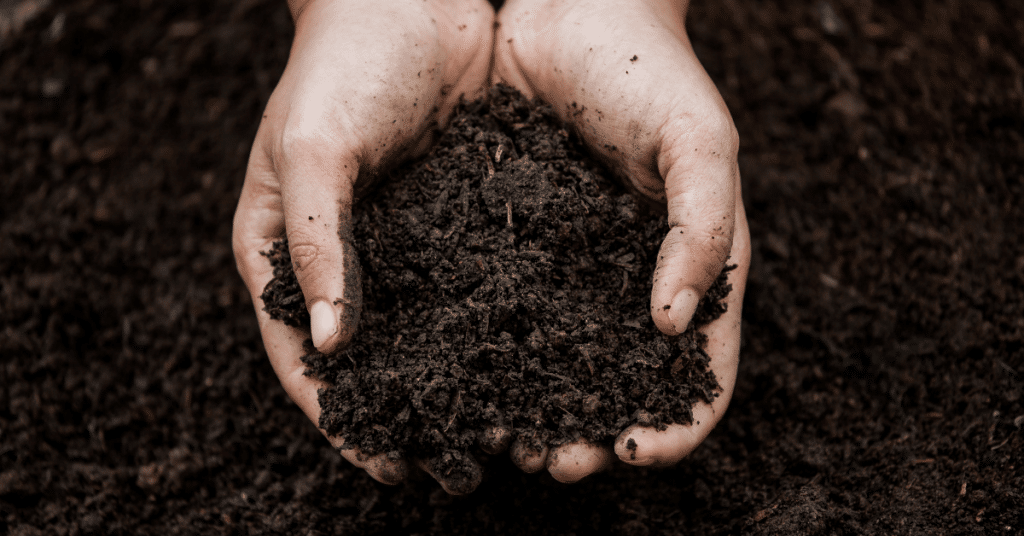
Before starting your organic garden, getting to know your soil is crucial. Understanding its composition and characteristics will help you create the optimal environment for your organic plants to to thrive. Here are the key steps to get to know your soil:
- Soil Testing: Conduct a soil test to assess your soil’s pH level and nutrient content. Soil testing kits are available at gardening centers or through agricultural extension services. The results will provide valuable information about the specific needs of your soil.
- pH Level: The pH level of your soil determines its acidity or alkalinity. Most plants prefer a slightly acidic to neutral pH range (around 6.0 to 7.0). If the pH is too high or too low, you may need to adjust it by adding amendments like sulfur or lime accordingly.
- Soil Texture: Determine your soil’s texture, which refers to the relative proportion of sand, silt, and clay particles. Sandy soil drains quickly but may not retain enough moisture or nutrients. Clay soil retains moisture but can become compacted. Loamy soil, a sand, silt, and clay balance, is ideal for most plants.
- Drainage: Evaluate the drainage capacity of your soil. Poor drainage can lead to soggy conditions and root rot, while excessive drainage may result in dry soil. Observe how quickly water absorbs into the ground and how long it drains. Adding organic matter or improving soil structure may be needed to enhance drainage.
- Organic Matter: Determine the organic matter content in your soil. Organic matter provides essential nutrients, improves soil structure, and enhances moisture retention. Assess if your soil lacks organic matter and consider adding compost, well-rotted manure, or other organic materials to enrich it.
- Soil Structure: Evaluate the structure of your soil, which refers to the arrangement of soil particles. Good soil allows for proper root penetration, air circulation, and water movement. Sandy soils tend to be loose, while clay soils can become compacted. Adding organic matter can improve poor soil health over time. Keep adding compost and organic mulches to the soil to increase its fertility. During the growing season, use organic fertilizers to increase soil fertility.
- Nutrient Deficiencies: Soil testing can identify specific nutrient deficiencies your plants may encounter. Common deficiencies include nitrogen, phosphorus, and potassium. Understanding these deficiencies will help you select appropriate organic fertilizers or amendments to provide nutrients. Using synthetic versions, most commercial fertilizers focus on N-P-K (nitrogen, phosphorus, and potassium). Natural fertilizers and amendments usually contain a wide spectrum of nutrients and they are all created by nature.
You can make informed decisions regarding soil amendments, plant selection, and appropriate gardening practices by getting to know your soil. It lays the foundation for a healthy and thriving organic garden, setting you up for success in growing nutrient-rich plants and cultivating a sustainable gardening environment.
Know Your Growing Zone
Before you plant your organic garden, you must first determine your zone. You can check your plant hardiness zone at USDA. Here are some of the reasons why:
Awareness of Appropriate Climate: Plant growth is affected by the local climate. Understanding your growing zone allows you to choose plants that will thrive in your environment. Plants have varying tolerances to heat and cold, so picking kinds that do well in your climate zone is essential.
Seasonal preparation based on frost dates: Knowing the typical first frost date for your growing zone is essential. You can use this information to organize your gardening efforts better. You’ll be prepared for the season’s last frost and know when to start seeds indoors and move seedlings outdoors. Planning plant growth according to the seasons helps maximize growth and protects vulnerable plants from frost.
Use the USDA Plant Hardiness Zone Map or regional gardening resources to find out what zone your garden is in. Knowing your growing zone in organic gardening is essential for deciding what to plant, when, and how to deal with pests. With this information, you can build a strong base for your organic garden.
How to Choose Your Raised Beds or for Organic Gardening
Choosing the right raised garden beds is important for successful organic gardening. Raised beds offer several advantages, such as improved soil drainage, better weed control, and easier access to gardening tasks. Here are some factors to consider when selecting pine raised garden beds for your organic vegetable garden:
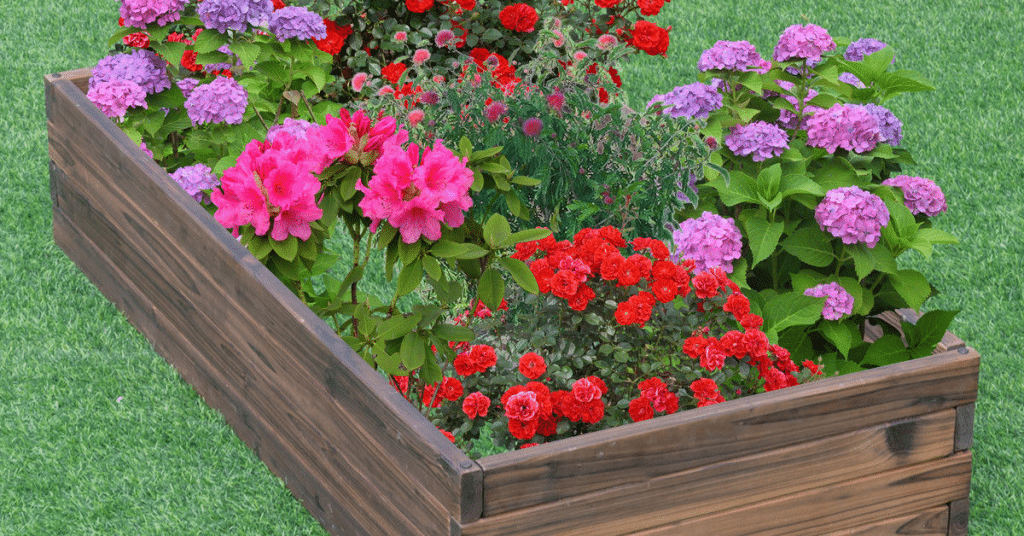
- Material: Can be made from various materials, including wood, metal, or composite materials. Wood is a popular choice due to its natural appearance and affordability. Ensure the wood is untreated or use rot-resistant varieties, such as cedar or redwood, to avoid potential chemical leaching into the soil.
- Size and Shape: Consider the size and shape of your raised garden based on your available space and gardening needs. Opt for a width that allows easy reach across the bed without stepping on the soil, typically around 3-4 feet wide. The length can vary depending on available space and personal preference.
- Height: Determine the desired height of your raised beds. The typical height ranges from 6 to 12 inches, but you can go higher if needed, especially if you prefer gardening at a comfortable standing or sitting height. Remember, taller beds require more soil, so consider your budget and accessibility.
- Accessibility: Ensure your raised beds are easily accessible for gardening tasks. Consider the height of the bed about your reach and mobility. If you have physical limitations, garden beds with lower heights or wheelchair-accessible designs may be beneficial.
- Drainage: Proper drainage is crucial for healthy plants. Choose garden beds with adequate drainage holes or gaps at the bottom to prevent waterlogging. This allows excess water to drain freely, preventing root rot and other water-related issues.
- Consideration for Organic Practices: If you prioritize organic practices, avoid raised gardens made from materials that may contain toxic substances or chemicals. Ensure the materials used in the construction align with your organic gardening principles.
- Aesthetics: Consider the aesthetic appeal of the garden beds, especially if they will be visible in your garden or backyard. Choose materials and designs that complement your overall garden theme and personal preferences.
- Cost and Longevity: Evaluate the cost and longevity of different raised bed options. Wood is generally more affordable but may require periodic maintenance or replacement. Metal or composite materials may have a higher upfront cost but offer greater durability and longevity.
- Customization: Determine if you prefer modular or customizable raised bed options. Modular beds allow for easy expansion or reconfiguration, while customizable options can be tailored to fit your garden area and design preferences.
- Environmental Considerations: Consider the environmental impact of the materials used in your raised beds. Opt for sustainable and eco-friendly choices whenever possible to align with your organic gardening values.
Considering these factors, you can choose raised beds that meet your needs, align with your organic gardening practices, and create an ideal plant growing environment. Raised beds provide an excellent foundation for successful and sustainable organic gardening.
What Vegetables Do You Like to Eat?
Before starting your organic garden plan, it’s essential to consider the vegetables you enjoy eating. This will ensure you grow crops you and your family will appreciate and make the most of. Here are some steps to help you determine which vegetables to include in your organic garden plan:
- Make a list: Make a list of vegetables you and your household enjoy eating. Consider everyday favorites and any specific vegetables that are a meal staple.
- Assess seasonal availability: Research the seasonal availability of different vegetables in your region. Certain crops thrive better in specific seasons, so understanding the appropriate planting times will help you plan your garden accordingly.
- Consider space and resources: Evaluate the available space in your garden and the resources you have, such as sunlight exposure and water availability. Some vegetables may require more space or specific growing conditions, so consider these factors when selecting your crops.
- Prioritize easy-to-grow vegetables: If you are new to gardening or have limited experience, consider including relatively easy vegetables to grow. Examples include lettuce, radishes, tomatoes, zucchini, herbs like basil and parsley, and beans.
- Explore varieties and heirlooms: Look for different types and heirloom options of the vegetables you enjoy. These can provide unique flavors, colors, and textures to your meals, adding diversity to your organic garden.
- Consider storage and preservation: If you are interested in preserving or storing vegetables for later use, consider including crops that lend themselves well to canning, freezing, or drying. Examples include tomatoes, cucumbers, peppers, and root vegetables like carrots or potatoes.
- Assess your gardening goals: Align your vegetable choices with your gardening goals. If you aim to be self-sufficient in certain vegetables, prioritize those crops that are highly consumed in your household or have a longer shelf life.
- Research companion planting: Explore companion planting to maximize the productivity and health of your organic garden. Certain vegetables thrive when planted alongside specific companion plants, which can help with natural pest control.
- Experiment and try new vegetables: Be bold and grow new vegetables. Gardening is a learning experience; exploring different varieties can introduce you to exciting flavors and expand your culinary horizons.
Remember, the vegetables you select should reflect your preferences and the needs of your garden space and climate. By growing the vegetables you enjoy, you’ll be motivated to care for your garden and reap the rewards of fresh, organic produce that brings joy to your meals.
Know the Different Types of Seeds
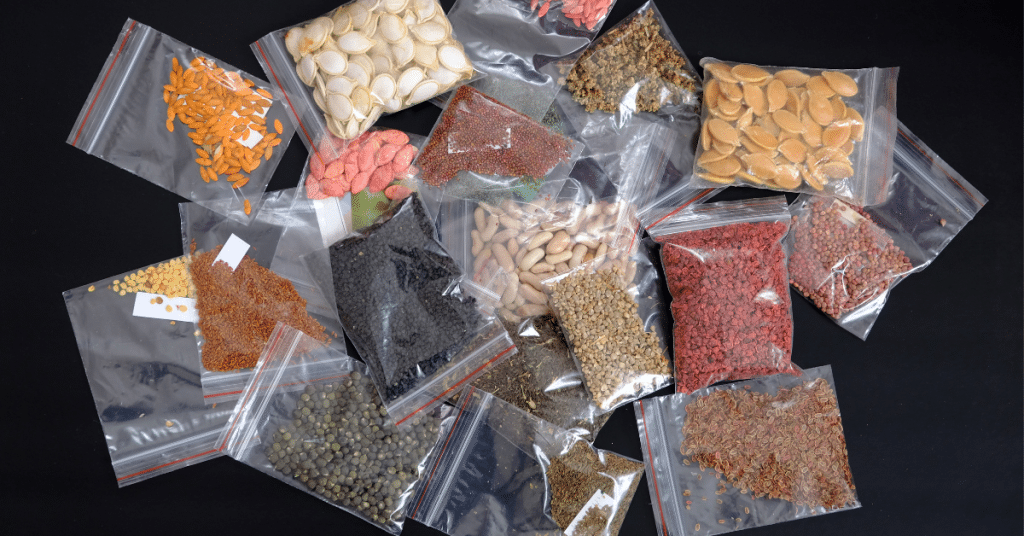
Before starting your organic garden, it’s important to understand the different types of seeds available. Here are the main types of seeds you should know about:
Open-Pollinated Seeds:
These seeds are pollinated naturally by wind, insects, or other means, resulting in plants that closely resemble their parent plants. Open-pollinated seeds produce offspring with similar traits yearly, allowing you to save and replant seeds from your own harvest.
Heirloom Seeds:
Heirloom seeds are a specific type of open-pollinated seeds passed down through generations. They are typically associated with traditional or old-fashioned varieties with historical significance and unique characteristics. Heirloom seeds preserve genetic diversity and are cherished for their flavors, colors, and adaptability.
Hybrid Seeds:
Hybrid seeds are produced by cross-pollinating two different plant varieties to create offspring with specific desirable traits. These traits may include disease resistance, improved yield, or uniformity. Hybrid seeds cannot reliably reproduce the same traits as the parent plants, so you must purchase new seeds yearly.
Organic Seeds:
They are produced from plants that have been grown and managed following organic practices. They are cultivated without commercial pesticides, fertilizers, or genetically modified organisms (GMOs). Organic seeds are an important choice for maintaining the integrity of your organic garden.
Genetically Modified (GM) Seeds:
Genetically modified seeds have been genetically altered in a laboratory to introduce specific traits, such as resistance to pests, diseases, or herbicides. GM seeds are typically associated with conventional agriculture and incompatible with organic gardening principles.
When choosing seeds for your organic garden, prioritize open-pollinated and heirloom seeds. They allow you to save seeds for future planting, preserve genetic diversity, and promote sustainability. Look for organic seeds to ensure they have been produced following organic standards. Avoid genetically modified seeds if you want to maintain an organic approach.
Direct Seeding vs. Transplanting
When planting your organic garden, you have two primary methods: direct seeding and transplanting. Each method has its advantages and considerations. Here’s a comparison of direct seeding and transplanting to help you make an informed decision:
Direct Seeding:
Direct seeding involves sowing seeds directly into the garden soil where the plants will grow to maturity.
Advantages:
Cost-effective: Direct seeding is typically more budget-friendly since you don’t need to purchase seedlings or invest in transplanting equipment.
Better root development: Plants that are directly seeded tend to develop stronger root systems as they adapt and grow in their natural environment from the start.
Less transplant shock: Since the plants are not being uprooted and transplanted, they are less prone to experiencing transplant shock.
Suitable for certain crops: Some crops, like root vegetables (carrots, radishes) or plants that dislike root disturbance (beans, corn), are better suited for direct seeding.
Considerations:
Longer time to harvest: Direct seeding generally takes longer for plants to reach maturity than transplanting, as seeds need to germinate and establish themselves.
Susceptible to weather conditions: Seeds are more vulnerable to adverse weather conditions, such as heavy rains or extreme temperatures, which can impact germination and early growth.
Thinning required: Direct seeding often requires thinning seedlings to ensure proper spacing and avoid overcrowding.
Transplanting:
Transplanting involves starting seeds indoors or purchasing seedlings and then moving them into the garden soil once they have reached a suitable size.
Advantages:
Earlier harvest: Transplanted seedlings often reach maturity sooner, as they benefit from a head start indoors or in a controlled environment.
Better control over spacing: Transplanting allows you to space plants evenly and strategically, optimizing growth and efficiently using your available garden area.
Enhanced plant selection: You have a wider range of plant varieties when starting with transplants, as not all crops may be readily available as direct-seed options.
Considerations:
Higher cost: Purchasing seedlings or investing in supplies for indoor seed starting can be more expensive.
Risk of transplant shock: Transplanted seedlings may experience shock due to the disturbance of their roots during the transplanting process. Adequate care is required to minimize stress on the plants.
Timing and hardening off: Transplanting requires careful timing, ensuring seedlings are ready for outdoor conditions and undergoing a gradual hardening-off process to acclimate them to the outdoor environment.
The decision between direct seeding and transplanting should be based on several considerations, including the crop type being grown, the amount of time and resources available, and personal taste. Many gardeners use both approaches, reaping the benefits of both strategies. If you want your plants to develop healthily and organically, you must experiment and adjust your methods to meet your garden’s needs.
Planting Your Organic Garden
The time has come to plant your garden after you have prepared the soil, constructed the garden beds, and acquired the seeds or plant starts. Planting is one of the most thrilling aspects of gardening, so pick a bright, sunny day and prepare your garden tools in advance.
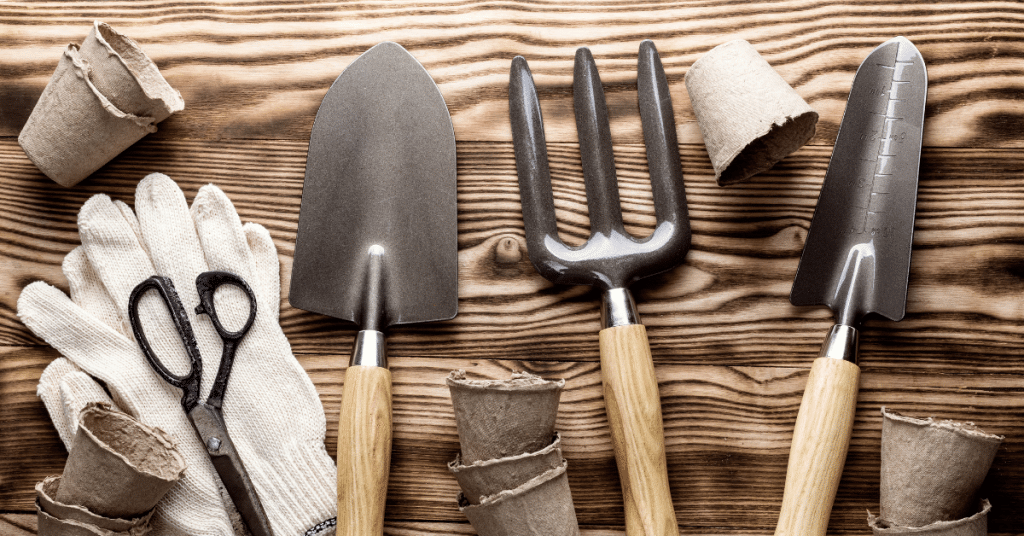
Useful Planting Tools
The right planting tools can make your gardening tasks more efficient and enjoyable. Here are some helpful planting tools for your organic garden:
- Hand Trowel: A hand trowel is a versatile tool for various planting tasks. It’s ideal for digging small planting holes, transplanting seedlings, and loosening soil. Look for a sturdy, ergonomic handle for comfortable grip and durability.
- Garden Fork: A garden fork is useful for turning and aerating the soil, breaking up clumps, and removing weeds. It helps improve soil structure and allows better nutrient and water penetration. Choose a garden fork with strong, sharp tines for efficient soil work.
- Garden Hoe: A garden hoe is handy for cultivating the soil, removing weeds, and creating furrows for planting seeds. Look for a hoe with a sharp blade and a comfortable handle for ease of use.
- Garden Rake: A garden rake is essential for leveling the soil, removing debris, and preparing seedbeds. It helps break up clumps and create a smooth surface for planting. Choose a sturdy rake with flexible tines for effective soil preparation.
- Garden Spade: A garden spade is useful for digging larger planting holes, edging beds, and transferring soil. It’s a versatile tool for various garden tasks. Look for a spade with a sharp, durable blade and a comfortable handle.
- Seed Sower: A seed sower or dispenser helps distribute seeds evenly and at the desired spacing. It ensures proper seed placement and saves time compared to manual sowing. Consider a handheld seed sower or a seed sowing tool with adjustable settings for different seed sizes.
- Watering Can or Hose: Adequate watering is crucial for plant health. A stainless bonsai watering can with a fine rose attachment or a garden hose with a nozzle provides controlled watering. Choose a watering can or hose that is easy to handle and has a good water flow.
- Garden Gloves: Protect your hands from thorns, rough soil, and potential irritants with sturdy garden gloves. Choose gloves made from breathable, durable materials that fit well and provide good dexterity.
- Plant Markers: Plant markers are useful for labeling and identifying plants in your garden. They help you keep track of plant varieties, planting dates, and other essential information. Use weather-resistant markers or opt for reusable options like wooden or plastic markers.
- Garden Caddy: Helps you traverse grass, gravel, and dirt effortlessly. This versatile Garden Caddy is your reliable companion for all your outdoor tasks like planting.
These planting tools will assist you in various tasks throughout your organic garden. Invest in high-quality tools that suit your gardening needs and ensure they are well-maintained for long-lasting use. With the right tools, you’ll be well-equipped to tackle any planting task and nurture your organic garden to thrive.
Maintaining Your Garden
Tending to the garden will be an exhilarating and uplifting activity. However, you may learn to dread stepping outside to check on your crops if you allow things to get out of hand. Though it should seem like something other than work, gardening demands focus and creative problem-solving.
Dedicating as little as ten to fifteen minutes daily to checking on the garden, pulling some weeds, checking irrigation, checking for pests, and harvesting ripe vegetables is the key to a happy garden (and a happy gardener). Pay more attention to your garden on scorching summer days. You may find yourself sitting peacefully with the plants on mornings when the temperature is a perfect 70 degrees and the sun is shining, simply appreciating the results of your hard work.
Organic Weed Management
Organic weed management is important to maintaining a healthy and thriving organic garden. Here are some effective strategies for managing weeds organically:
- Mulching: Apply organic mulch, such as straw, wood chips, or leaves, around your plants and in between rows. Mulch helps suppress weed growth by blocking sunlight, reducing weed seed germination, and preventing weed establishment. It also helps retain soil moisture and improve soil health.
- Hand Weeding: Regularly inspect your garden and manually remove weeds by pulling them out from the root. Hand weeding is most effective when done when the soil is moist, making it easier to remove weeds entirely. Be thorough and remove the entire weed, including the roots, to prevent regrowth.
- Crop Rotation: Rotate your crops each season to disrupt weed life cycles. Weeds specific to certain plants may struggle to establish if the planting location changes yearly. Additionally, diverse crop rotations promote overall garden health, minimize pest and disease pressure, and improve soil fertility.
- Cover Crops: Plant crops during the offseason or in unused garden beds. Cover crops, such as clover or buckwheat, help suppress weeds by competing for resources, adding organic matter to the soil when turned under, and improving soil structure. They also protect the soil from erosion and maintain its health during inactivity.
- Weed Control Fabric: Weed control fabric, also known as landscape fabric or weed barrier, can be used in areas where you don’t plan to plant directly in the soil. Place the fabric over the soil surface and cut holes for your desired plants. This helps suppress weed growth while still allowing water and nutrients to reach the plant roots.
- Persistent Monitoring: Regularly monitor your garden for any signs of weed growth. Early detection and prompt action can prevent weeds from spreading and becoming more challenging to control. By staying vigilant and addressing weeds early, you can keep them from competing with your desired plants.
Organic Pest and Disease Management
Organic pest and disease management is crucial to maintaining a thriving organic garden. Here are effective strategies for managing pests and diseases organically:
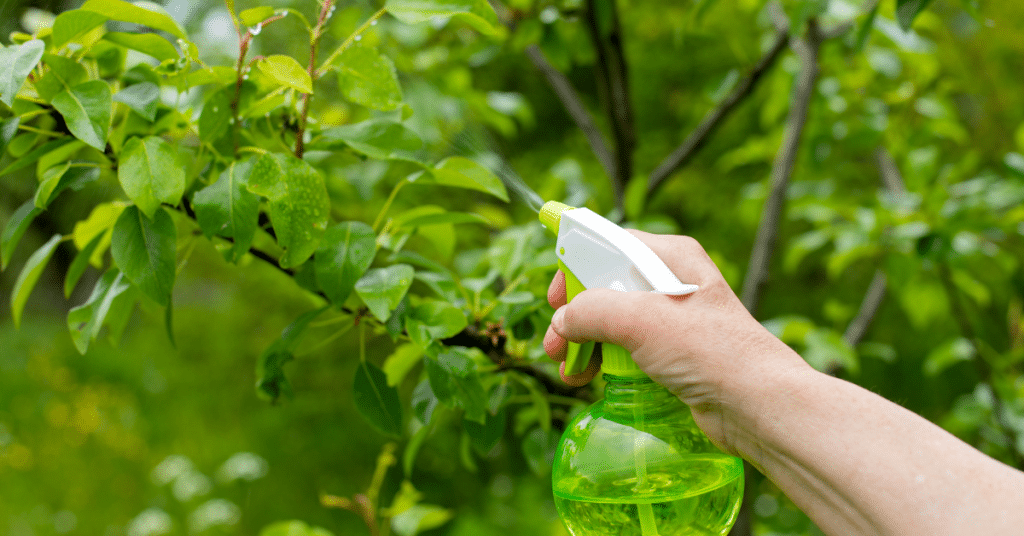
Companion Planting: Utilize companion planting by intermixing different plant species with beneficial relationships. Certain plants repel pests, while others attract beneficial insects that prey on pests. For example, planting marigolds alongside tomatoes can help deter nematodes, and attracting ladybugs with flowering plants can help control aphids.
Biological Controls: Encourage natural predators and beneficial insects in your garden to control pests. These include ladybugs, lacewings, spiders, and birds. Provide habitat and food sources for these beneficial organisms by incorporating diverse plantings and avoiding synthetic pesticides.
Sanitation: Maintain good garden hygiene by regularly removing plant debris, fallen fruits, and weeds. These can harbor pests and diseases, providing them a place to overwinter or spread. Dispose of diseased plants properly, and clean tools and equipment to prevent the transfer of pathogens.
Organic Sprays: Use organic sprays, such as insecticidal soaps, horticultural oils, or neem oil, to target specific pests. These organic sprays are derived from natural sources and can effectively control pests while minimizing harm to beneficial insects and the environment. Follow the instructions carefully for safe and practical application.
Traps and Barriers: Employ traps and barriers to monitor and control specific pests. Yellow sticky traps can attract and capture flying insects like aphids or whiteflies. Beer traps can be effective for controlling slugs or snails. Use copper tape or collars to create barriers against pests like slugs and cutworms.
Beneficial Nematodes: Apply helpful nematodes, microscopic organisms that prey on soil-dwelling pests like grubs or caterpillars. These nematodes can be watered into the soil and help control pests without harming beneficial insects or the environment. Follow the instructions provided with the nematode product.
Regular Monitoring: Regularly inspect your plants for signs of pests or diseases. Monitor for chewed leaves, distorted growth, discoloration, or unusual symptoms. Early detection allows for timely intervention and helps prevent pest or disease outbreaks from spreading.
Proper Watering
Proper watering is essential for maintaining a healthy and productive organic garden. Here are some guidelines for watering your organic garden effectively:
- Water deeply: When you water your garden, aim to provide a deep watering that reaches the plant roots. Shallow watering can lead to shallow root growth and make plants more drought-resistant. Watering deeply encourages plants to develop strong and healthy root systems.
- Water at the right time: Water your garden early in the morning or late in the afternoon to minimize water loss due to evaporation. Avoid watering during the hottest part of the day when the sun is intense, as this can cause water to evaporate quickly and increase the risk of fungal diseases.
- Use the right amount of water: Ensure you provide enough water to moisten the soil thoroughly. The specific amount will vary depending on plant type, soil type, and weather conditions. Generally, aim for about 1 inch of water per week, including rainfall, but adjust as needed based on plant requirements and environmental factors.
- Water at the base of plants: Direct the water at the bottom of the plants rather than sprinkling it over the foliage. Watering at the base helps minimize fungal diseases and ensures the water reaches the root zone where it’s needed most.
- Monitor soil moisture: Regularly check the soil’s moisture level by inserting your finger into the soil or using a moisture meter. This will help you determine when to water. Avoid overwatering, as it can lead to root rot and other issues. Water only when the soil feels dry to the touch but not overly parched.
- Use watering techniques that conserve water: Employ water-saving techniques such as drip irrigation or soaker hoses. These methods deliver water directly to the root zone, minimizing water waste through evaporation or runoff. Consider using rain barrels to collect and store rainwater for later use in your garden.
- Adjust watering based on weather conditions: Adapt your watering schedule based on weather conditions. During heavy rainfall, you may need to reduce or pause watering. In hot and dry weather, increase watering frequency or provide additional water as needed to prevent plants from becoming stressed.
End Of Season Gardening Tips & Tasks
As the gardening season ends, there are several important tasks and tips to consider to wrap up your organic garden and prepare for the next season. Here are end-of-season gardening tips:
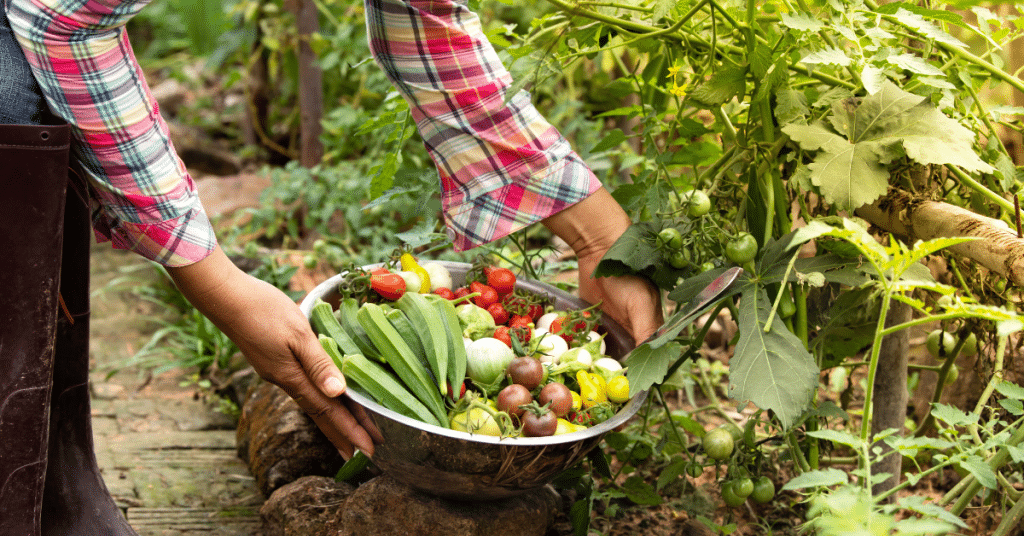
Harvest remaining crops: Harvest any crops before the first frost or when they reach maturity. Enjoy the fresh produce, or consider preserving and storing them for later use.
Remove and compost spent plants: Remove and compost plants that have finished producing or have suffered from diseases or pests. Clearing out old plants helps reduce the risk of overwintering pests or diseases.
Save seeds: If you have open-pollinated or heirloom plants, save their seeds for the following year’s planting. Allow the seeds to fully mature, and collect and store them properly in a cool and dry place.
Clean and sanitize: Clean garden tools, containers, and other equipment used throughout the season. Sanitize them with a mixture of water and mild soap or a diluted bleach solution to reduce the risk of disease transmission.
Amend the soil: Once the garden beds are cleared, amend the soil by adding organic matter such as compost, well-rotted manure, rock dust, or leaf mulch. This replenishes nutrients, improves soil structure, and prepares the beds for the next season.
Cover crops or mulch: Consider planting a cover crop such as winter rye, clover, or hairy vetch to protect and enrich the soil during the winter. Alternatively, apply a layer of organic mulch to help retain moisture and prevent weed growth.
Protect perennial plants: If you have perennial plants, provide winter protection by mulching around their bases with thick organic material. This helps insulate the roots and protect them from freezing temperatures.
Clean and store garden supports: Clean and store any trellises, stakes, or supports used for climbing plants. Remove plant debris, brush off soil, and store them in a dry location to prevent rusting or deterioration.
Maintain compost: Add organic material to your compost pile or bin. Turn the compost to ensure proper decomposition, and keep the balance of brown (carbon-rich) and green (nitrogen-rich) materials.
Reflect and plan:
- Take the opportunity to reflect on the season’s successes and challenges.
- Consider what worked well and what you may want to change or improve for the next season.
- Start planning and researching for new varieties, garden layouts, or techniques you’d like to try.
Conclusion
To summarize, organic gardening is a gratifying and fulfilling experience for beginning gardeners. You may establish a successful and sustainable garden that delivers fresh and nutritious vegetables while promoting environmental stewardship by learning the fundamentals of organic gardening.
Organic gardening is more than just growing plants; it is a holistic strategy that promotes biodiversity, nurtures the soil, and preserves the natural balance. It protects your and your family’s health as well as the health of the world by eliminating synthetic chemicals and pesticides.
As a newbie gardener, remember that organic gardening is a lifelong learning experience. Don’t let failures or problems demotivate you along the path. Accept each season as an opportunity to learn more about your garden’s unique ecosystem and improve your organic gardening techniques, whether you have a little balcony garden, backyard, small garden, or community garden.
Let us get our hands dirty, embrace the wonders of organic methods, and watch our gardens thrive with energy, beauty, and abundance. Good luck with your planting! For more organic gardening basics, please visit Hardy Garden.
